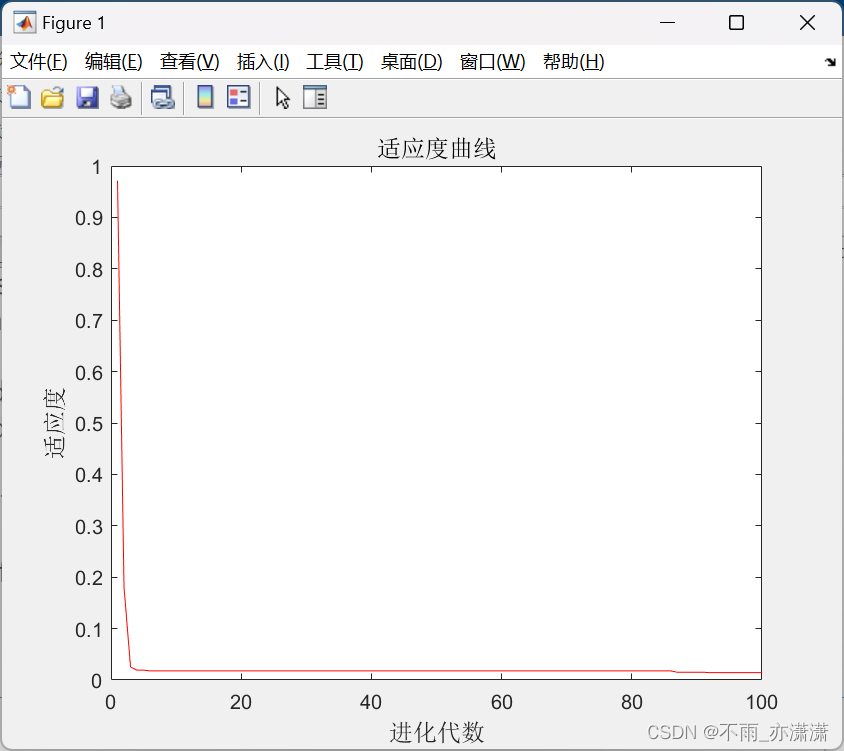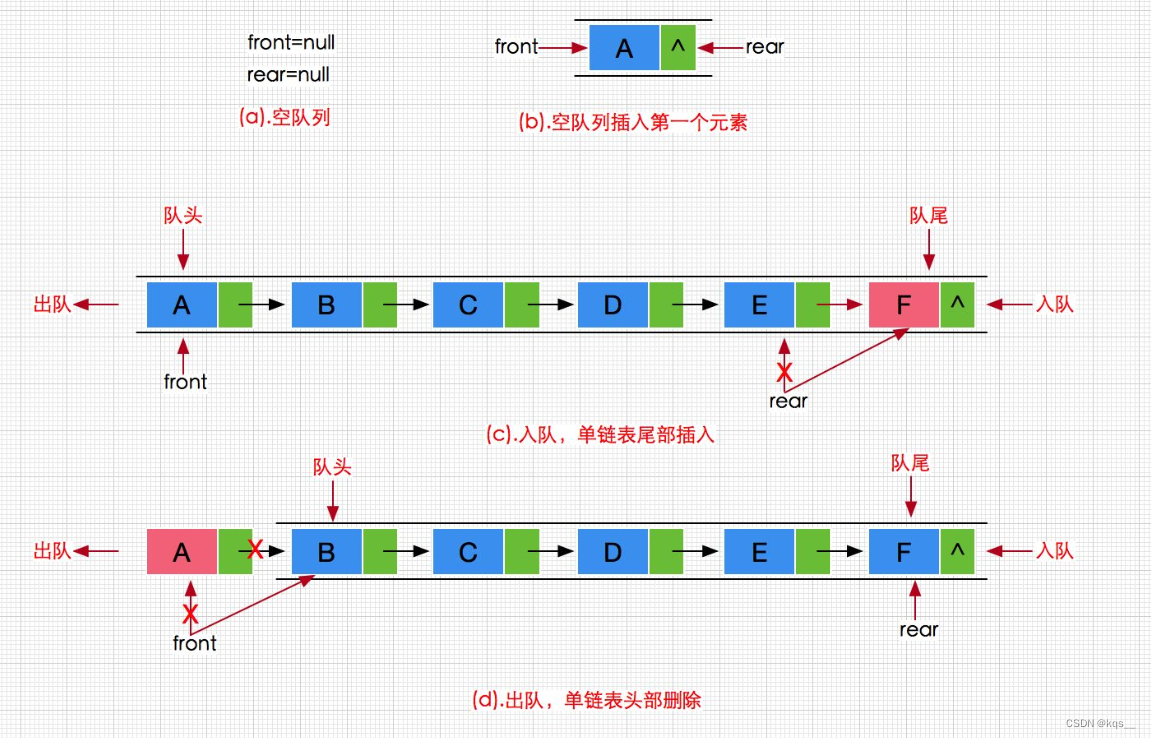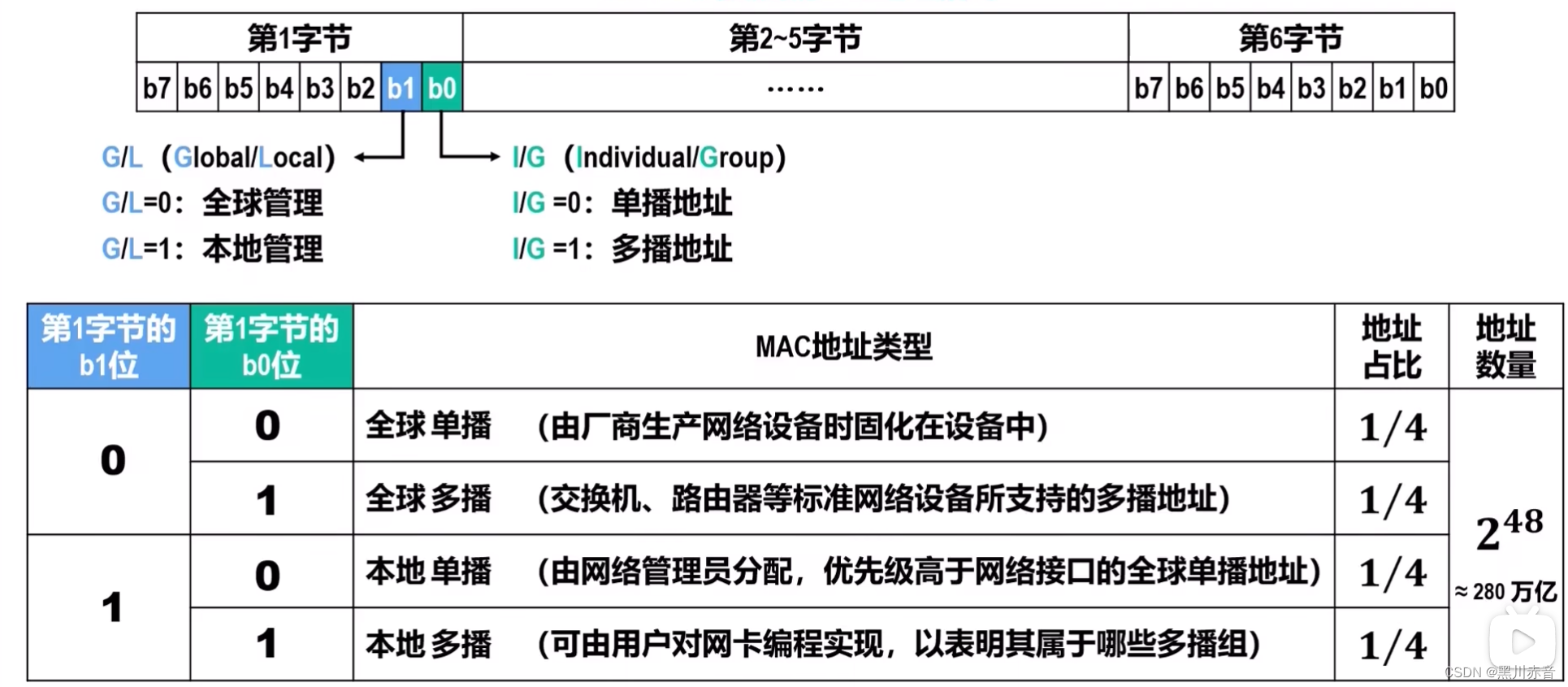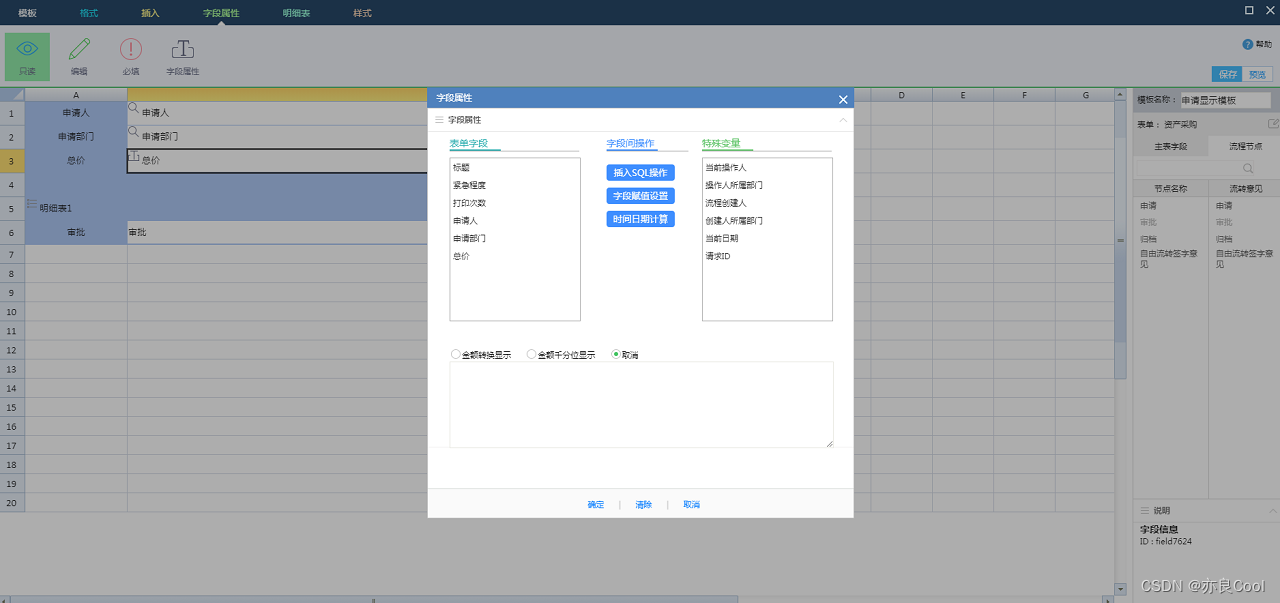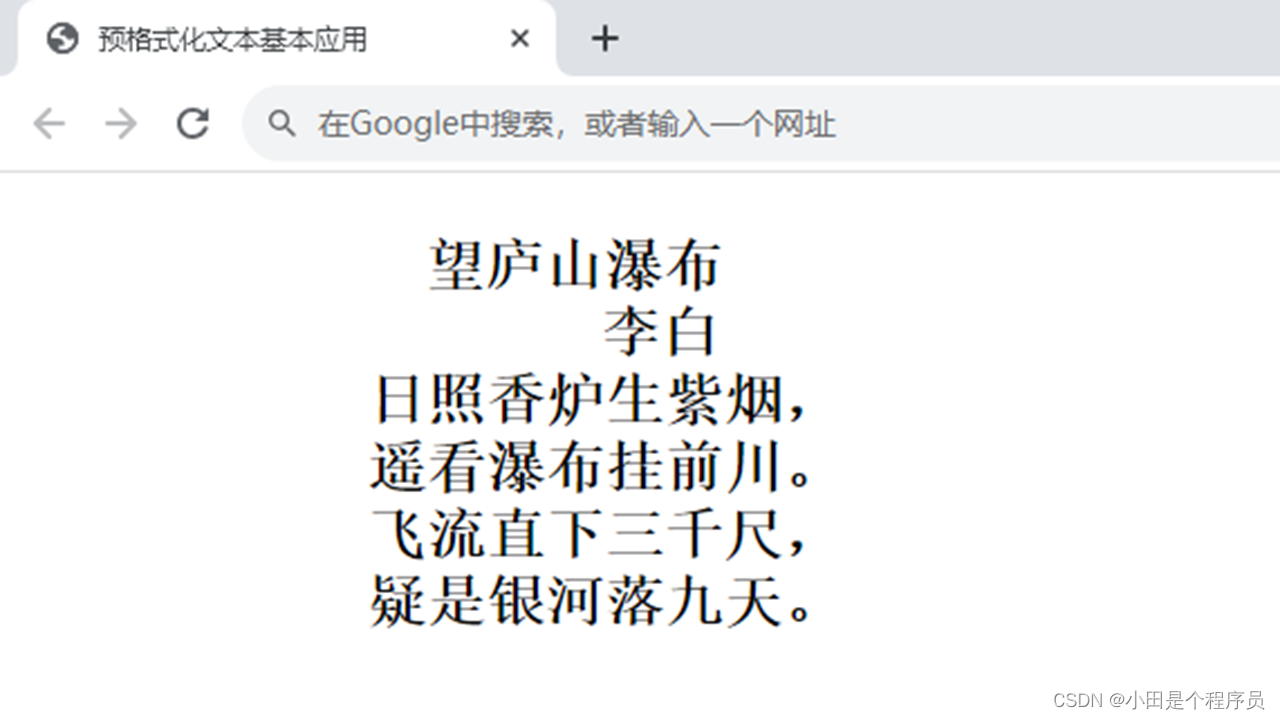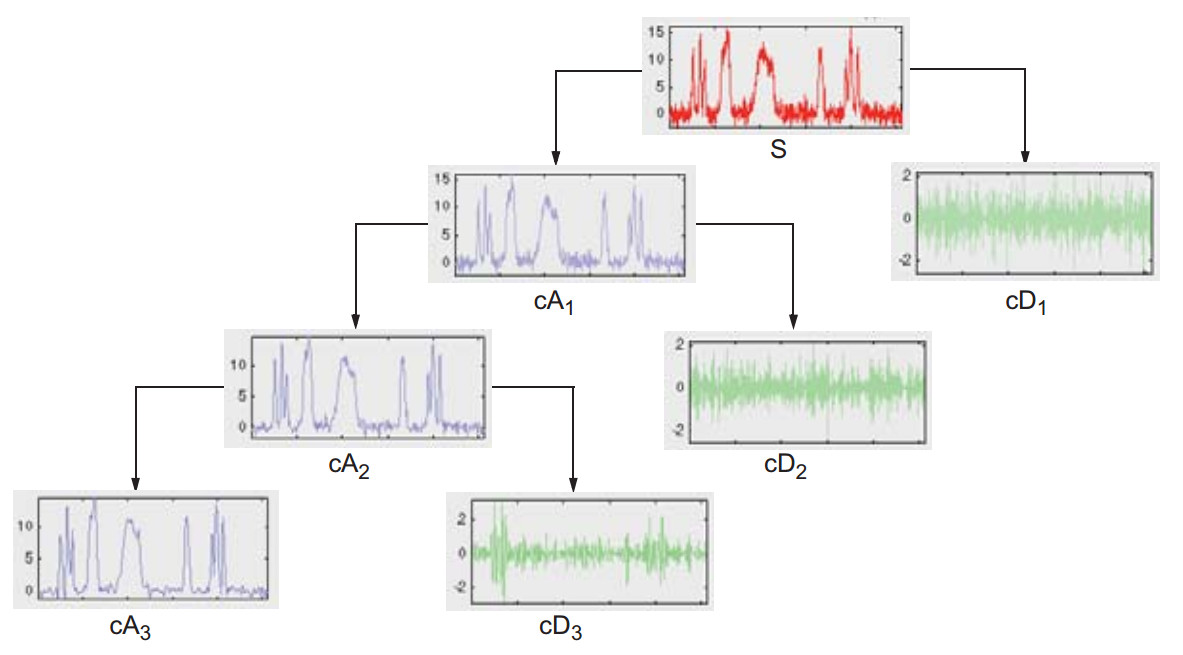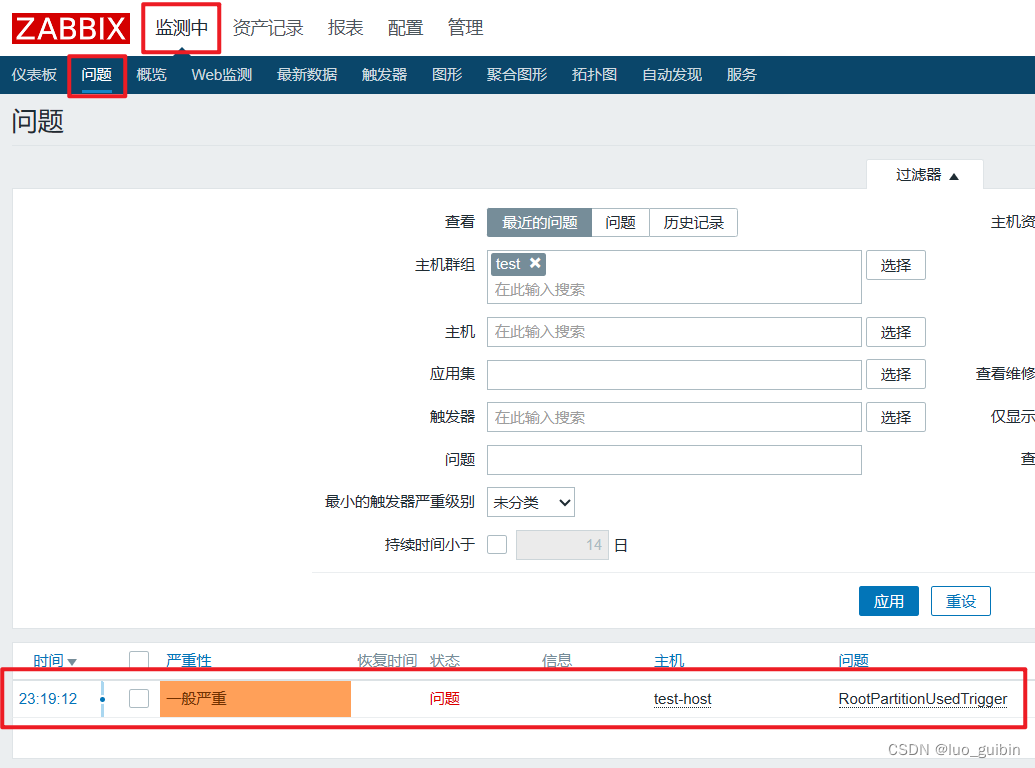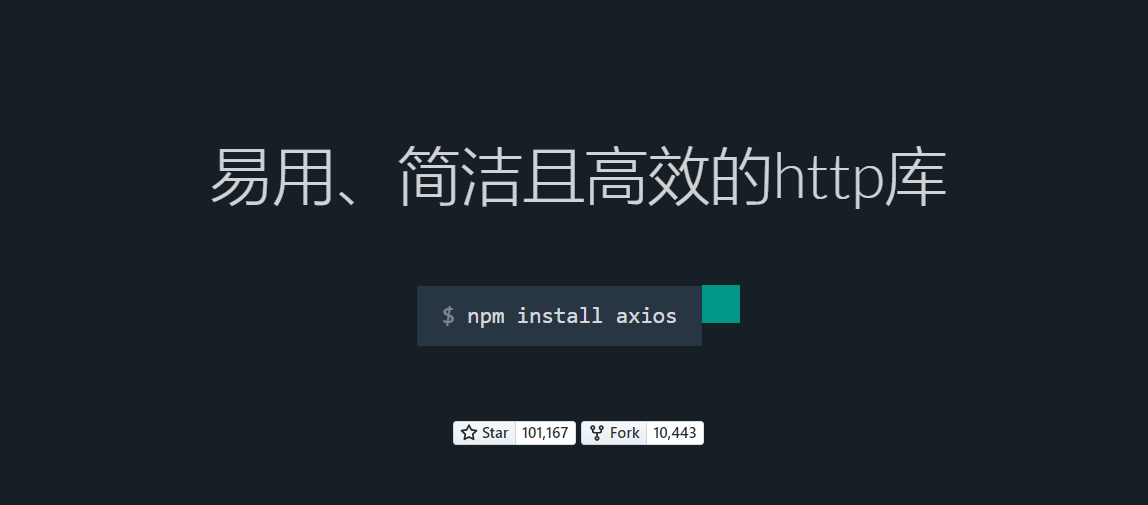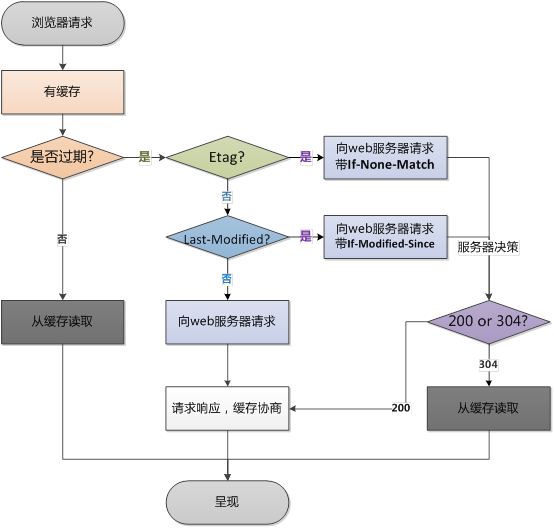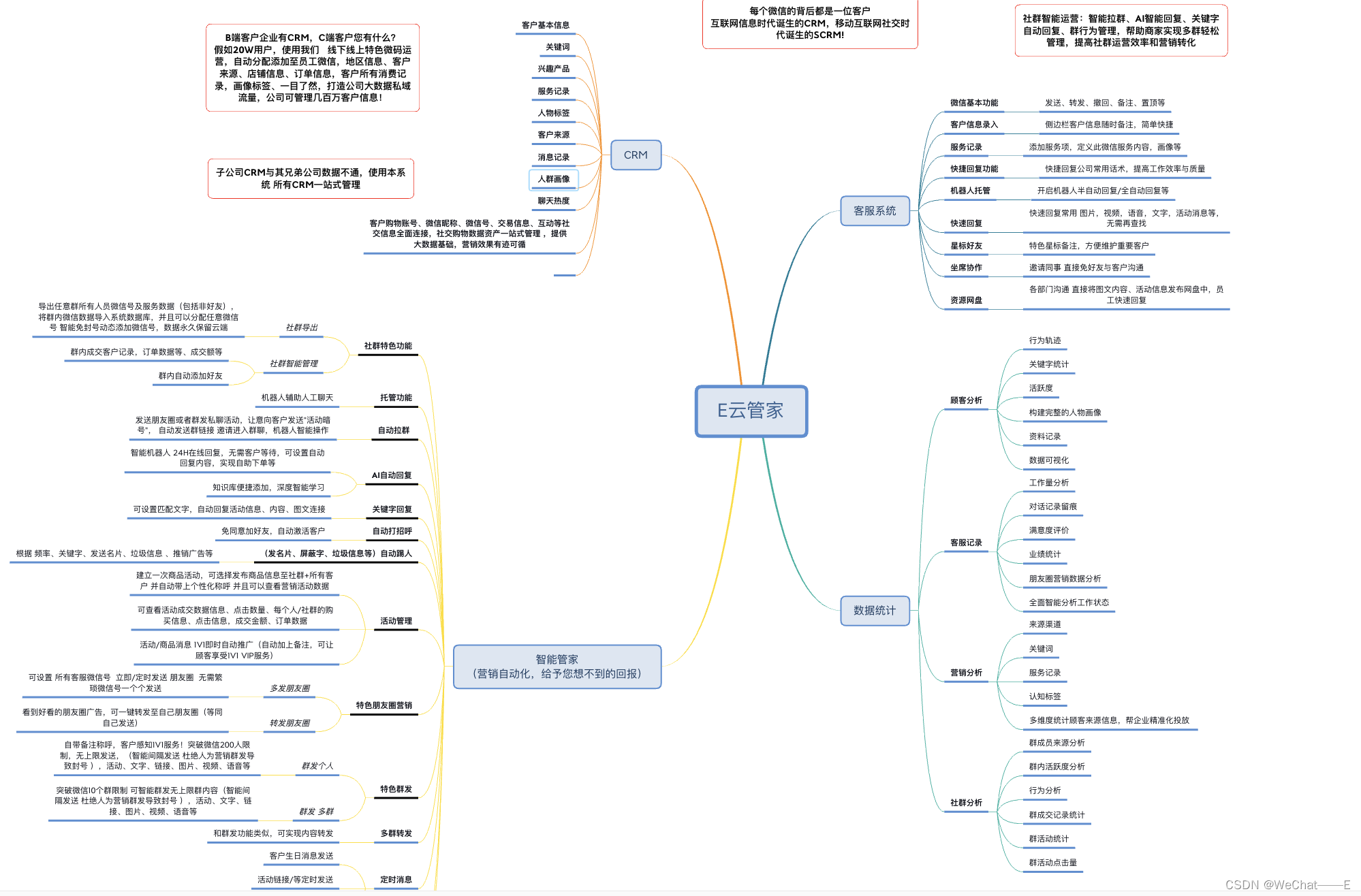项目开发阶段,mybatis的SQL打印有占位符,调试起来还是有点麻烦,随想整合P6Spy打印可以直接执行的SQL,方便调试,用的Durid连接池。
Springboot项目集成Durid
<dependency>
<groupId>com.alibaba</groupId>
<artifactId>druid-spring-boot-starter</artifactId>
<version>1.2.18</version>
</dependency>配置文件application.yml
spring:
datasource:
driver-class-name: com.mysql.cj.jdbc.Driver
url: jdbc:mysql://127.0.0.1:3306/test?useUnicode=true&characterEncoding=utf8&useSSL=true
username: root
password: 123456
# 指定数据源为 DruidDataSource,默认值为 HikariDataSource
type: com.alibaba.druid.pool.DruidDataSource
druid:
initial-size: 5
min-idle: 5
max-active: 15
max-wait: 30000
min-evictable-idle-time-millis: 30000
time-between-eviction-runs-millis: 30000
validation-query: SELECT 1 FROM DUAL
test-while-idle: true
test-on-borrow: false
test-on-return: false
pool-prepared-statements: true
max-pool-prepared-statement-per-connection-size: 5
filters: stat,wall
use-global-data-source-stat: true
stat-view-servlet:
enabled: true
url-pattern: /druid/*
login-username: admin
login-password: 111111
web-stat-filter:
enabled: true
url-pattern: /*
exclusions: /druid/*, *.js, *.jpeg, *.jpg, *.png, *.gif, *.css
filter:
stat:
merge-sql: true
slow-sql-millis: 3000
log-slow-sql: true配置P6Spy,有两种方式,一种是添加依赖jar包,一种是用p6spy-spring-boot-starter。
第一种:
添加依赖:可以添加到dev环境,生产环境不建议使用,有性能损耗。
<dependency>
<groupId>p6spy</groupId>
<artifactId>p6spy</artifactId>
<version>3.9.1</version>
</dependency>或者只添加到开发环境
<profiles>
<profile>
<id>dev</id>
<activation>
<activeByDefault>true</activeByDefault>
</activation>
<properties>
<profiles.active>dev</profiles.active>
</properties>
<dependencies>
<dependency>
<groupId>p6spy</groupId>
<artifactId>p6spy</artifactId>
<version>3.9.1</version>
</dependency>
</dependencies>
</profile>
</profiles>修改数据源配置,需要改2个地方,url和driver-class-name
修改前:

修改后:
spring:
datasource:
url: jdbc:p6spy:mysql://x.x.x.x:3306/my_test?allowPublicKeyRetrieval=true&useSSL=true&serverTimezone=Asia/Shanghai&useUnicode=true&characterEncoding=utf8&allowMultiQueries=true&useSSL=false
username: root
password: 123456
driver-class-name: com.p6spy.engine.spy.P6SpyDriver 
添加spy.properties文件,默认会在项目根目录生成一个spy.log文件,把SQL打印到该文件中。
module.log=com.p6spy.engine.logging.P6LogFactory,com.p6spy.engine.outage.P6OutageFactory
# 自定义日志打印
logMessageFormat=com.baomidou.mybatisplus.extension.p6spy.P6SpyLogger
#日志输出到控制台
appender=com.baomidou.mybatisplus.extension.p6spy.StdoutLogger
# 使用日志系统记录 sql
#appender=com.p6spy.engine.spy.appender.Slf4JLogger
# 设置 p6spy driver 代理
deregisterdrivers=true
# 取消JDBC URL前缀
useprefix=true
# 配置记录 Log 例外,可去掉的结果集有error,info,batch,debug,statement,commit,rollback,result,resultset.
excludecategories=info,debug,result,batch,resultset
# 日期格式
dateformat=yyyy-MM-dd HH:mm:ss
# 真实JDBC driver , 多个以 逗号 分割 默认为空
#driverlist=org.h2.Driver
driverlist=oracle.jdbc.OracleDriver
# 是否开启慢SQL记录
outagedetection=true
# 慢SQL记录标准 2 秒
outagedetectioninterval=2集成完成。
spy.properties参考:
mybatis-plus:
#3.2.1以上使用
modulelist=com.baomidou.mybatisplus.extension.p6spy.MybatisPlusLogFactory,com.p6spy.engine.outage.P6OutageFactory
#3.2.1以下使用或者不配置
#modulelist=com.p6spy.engine.logging.P6LogFactory,com.p6spy.engine.outage.P6OutageFactory
# 自定义日志打印
logMessageFormat=com.baomidou.mybatisplus.extension.p6spy.P6SpyLogger
#日志输出到控制台
appender=com.baomidou.mybatisplus.extension.p6spy.StdoutLogger
# 使用日志系统记录 sql
#appender=com.p6spy.engine.spy.appender.Slf4JLogger
# 设置 p6spy driver 代理
deregisterdrivers=true
# 取消JDBC URL前缀
useprefix=true
# 配置记录 Log 例外,可去掉的结果集有error,info,batch,debug,statement,commit,rollback,result,resultset.
excludecategories=info,debug,result,commit,resultset
# 日期格式
dateformat=yyyy-MM-dd HH:mm:ss
# 实际驱动可多个
#driverlist=org.h2.Driver
# 是否开启慢SQL记录
outagedetection=true
# 慢SQL记录标准 2 秒
outagedetectioninterval=2官网的例子:
#################################################################
# P6Spy Options File #
# See documentation for detailed instructions #
# http://p6spy.github.io/p6spy/2.0/configandusage.html #
#################################################################
#################################################################
# MODULES #
# #
# Module list adapts the modular functionality of P6Spy. #
# Only modules listed are active. #
# (default is com.p6spy.engine.logging.P6LogFactory and #
# com.p6spy.engine.spy.P6SpyFactory) #
# Please note that the core module (P6SpyFactory) can't be #
# deactivated. #
# Unlike the other properties, activation of the changes on #
# this one requires reload. #
#################################################################
#modulelist=com.p6spy.engine.spy.P6SpyFactory,com.p6spy.engine.logging.P6LogFactory,com.p6spy.engine.outage.P6OutageFactory
################################################################
# CORE (P6SPY) PROPERTIES #
################################################################
# A comma separated list of JDBC drivers to load and register.
# (default is empty)
#
# Note: This is normally only needed when using P6Spy in an
# application server environment with a JNDI data source or when
# using a JDBC driver that does not implement the JDBC 4.0 API
# (specifically automatic registration).
#driverlist=
# for flushing per statement
# (default is false)
#autoflush=false
# sets the date format using Java's SimpleDateFormat routine.
# In case property is not set, milliseconds since 1.1.1970 (unix time) is used (default is empty)
#dateformat=
# prints a stack trace for every statement logged
#stacktrace=false
# if stacktrace=true, specifies the stack trace to print
#stacktraceclass=
# determines if property file should be reloaded
# Please note: reload means forgetting all the previously set
# settings (even those set during runtime - via JMX)
# and starting with the clean table
# (default is false)
#reloadproperties=false
# determines how often should be reloaded in seconds
# (default is 60)
#reloadpropertiesinterval=60
# specifies the appender to use for logging
# Please note: reload means forgetting all the previously set
# settings (even those set during runtime - via JMX)
# and starting with the clean table
# (only the properties read from the configuration file)
# (default is com.p6spy.engine.spy.appender.FileLogger)
#appender=com.p6spy.engine.spy.appender.Slf4JLogger
#appender=com.p6spy.engine.spy.appender.StdoutLogger
#appender=com.p6spy.engine.spy.appender.FileLogger
# name of logfile to use, note Windows users should make sure to use forward slashes in their pathname (e:/test/spy.log)
# (used for com.p6spy.engine.spy.appender.FileLogger only)
# (default is spy.log)
#logfile=spy.log
# append to the p6spy log file. if this is set to false the
# log file is truncated every time. (file logger only)
# (default is true)
#append=true
# class to use for formatting log messages (default is: com.p6spy.engine.spy.appender.SingleLineFormat)
#logMessageFormat=com.p6spy.engine.spy.appender.SingleLineFormat
# Custom log message format used ONLY IF logMessageFormat is set to com.p6spy.engine.spy.appender.CustomLineFormat
# default is %(currentTime)|%(executionTime)|%(category)|connection%(connectionId)|%(sqlSingleLine)
# Available placeholders are:
# %(connectionId) the id of the connection
# %(currentTime) the current time expressing in milliseconds
# %(executionTime) the time in milliseconds that the operation took to complete
# %(category) the category of the operation
# %(effectiveSql) the SQL statement as submitted to the driver
# %(effectiveSqlSingleLine) the SQL statement as submitted to the driver, with all new lines removed
# %(sql) the SQL statement with all bind variables replaced with actual values
# %(sqlSingleLine) the SQL statement with all bind variables replaced with actual values, with all new lines removed
#customLogMessageFormat=%(currentTime)|%(executionTime)|%(category)|connection%(connectionId)|%(sqlSingleLine)
# format that is used for logging of the java.util.Date implementations (has to be compatible with java.text.SimpleDateFormat)
# (default is yyyy-MM-dd'T'HH:mm:ss.SSSZ)
#databaseDialectDateFormat=yyyy-MM-dd'T'HH:mm:ss.SSSZ
# format that is used for logging of the java.sql.Timestamp implementations (has to be compatible with java.text.SimpleDateFormat)
# (default is yyyy-MM-dd'T'HH:mm:ss.SSSZ)
#databaseDialectTimestampFormat=yyyy-MM-dd'T'HH:mm:ss.SSSZ
# format that is used for logging booleans, possible values: boolean, numeric
# (default is boolean)
#databaseDialectBooleanFormat=boolean
# Specifies the format for logging binary data. Not applicable if excludebinary is true.
# (default is com.p6spy.engine.logging.format.HexEncodedBinaryFormat)
#databaseDialectBinaryFormat=com.p6spy.engine.logging.format.PostgreSQLBinaryFormat
#databaseDialectBinaryFormat=com.p6spy.engine.logging.format.MySQLBinaryFormat
#databaseDialectBinaryFormat=com.p6spy.engine.logging.format.HexEncodedBinaryFormat
# whether to expose options via JMX or not
# (default is true)
#jmx=true
# if exposing options via jmx (see option: jmx), what should be the prefix used?
# jmx naming pattern constructed is: com.p6spy(.<jmxPrefix>)?:name=<optionsClassName>
# please note, if there is already such a name in use it would be unregistered first (the last registered wins)
# (default is none)
#jmxPrefix=
# if set to true, the execution time will be measured in nanoseconds as opposed to milliseconds
# (default is false)
#useNanoTime=false
#################################################################
# DataSource replacement #
# #
# Replace the real DataSource class in your application server #
# configuration with the name com.p6spy.engine.spy.P6DataSource #
# (that provides also connection pooling and xa support). #
# then add the JNDI name and class name of the real #
# DataSource here #
# #
# Values set in this item cannot be reloaded using the #
# reloadproperties variable. Once it is loaded, it remains #
# in memory until the application is restarted. #
# #
#################################################################
#realdatasource=/RealMySqlDS
#realdatasourceclass=com.mysql.jdbc.jdbc2.optional.MysqlDataSource
#################################################################
# DataSource properties #
# #
# If you are using the DataSource support to intercept calls #
# to a DataSource that requires properties for proper setup, #
# define those properties here. Use name value pairs, separate #
# the name and value with a semicolon, and separate the #
# pairs with commas. #
# #
# The example shown here is for mysql #
# #
#################################################################
#realdatasourceproperties=port;3306,serverName;myhost,databaseName;jbossdb,foo;bar
#################################################################
# JNDI DataSource lookup #
# #
# If you are using the DataSource support outside of an app #
# server, you will probably need to define the JNDI Context #
# environment. #
# #
# If the P6Spy code will be executing inside an app server then #
# do not use these properties, and the DataSource lookup will #
# use the naming context defined by the app server. #
# #
# The two standard elements of the naming environment are #
# jndicontextfactory and jndicontextproviderurl. If you need #
# additional elements, use the jndicontextcustom property. #
# You can define multiple properties in jndicontextcustom, #
# in name value pairs. Separate the name and value with a #
# semicolon, and separate the pairs with commas. #
# #
# The example shown here is for a standalone program running on #
# a machine that is also running JBoss, so the JNDI context #
# is configured for JBoss (3.0.4). #
# #
# (by default all these are empty) #
#################################################################
#jndicontextfactory=org.jnp.interfaces.NamingContextFactory
#jndicontextproviderurl=localhost:1099
#jndicontextcustom=java.naming.factory.url.pkgs;org.jboss.naming:org.jnp.interfaces
#jndicontextfactory=com.ibm.websphere.naming.WsnInitialContextFactory
#jndicontextproviderurl=iiop://localhost:900
################################################################
# P6 LOGGING SPECIFIC PROPERTIES #
################################################################
# filter what is logged
# please note this is a precondition for usage of: include/exclude/sqlexpression
# (default is false)
#filter=false
# comma separated list of strings to include
# please note that special characters escaping (used in java) has to be done for the provided regular expression
# (default is empty)
#include=
# comma separated list of strings to exclude
# (default is empty)
#exclude=
# sql expression to evaluate if using regex
# please note that special characters escaping (used in java) has to be done for the provided regular expression
# (default is empty)
#sqlexpression=
#list of categories to exclude: error, info, batch, debug, statement,
#commit, rollback, result and resultset are valid values
# (default is info,debug,result,resultset,batch)
#excludecategories=info,debug,result,resultset,batch
#whether the binary values (passed to DB or retrieved ones) should be logged with placeholder: [binary] or not.
# (default is false)
#excludebinary=false
# Execution threshold applies to the standard logging of P6Spy.
# While the standard logging logs out every statement
# regardless of its execution time, this feature puts a time
# condition on that logging. Only statements that have taken
# longer than the time specified (in milliseconds) will be
# logged. This way it is possible to see only statements that
# have exceeded some high water mark.
# This time is reloadable.
#
# executionThreshold=integer time (milliseconds)
# (default is 0)
#executionThreshold=
################################################################
# P6 OUTAGE SPECIFIC PROPERTIES #
################################################################
# Outage Detection
#
# This feature detects long-running statements that may be indicative of
# a database outage problem. If this feature is turned on, it will log any
# statement that surpasses the configurable time boundary during its execution.
# When this feature is enabled, no other statements are logged except the long
# running statements. The interval property is the boundary time set in seconds.
# For example, if this is set to 2, then any statement requiring at least 2
# seconds will be logged. Note that the same statement will continue to be logged
# for as long as it executes. So if the interval is set to 2, and the query takes
# 11 seconds, it will be logged 5 times (at the 2, 4, 6, 8, 10 second intervals).
#
# outagedetection=true|false
# outagedetectioninterval=integer time (seconds)
#
# (default is false)
#outagedetection=false
# (default is 60)
#outagedetectioninterval=30第二种:
添加依赖:
<dependency>
<groupId>com.github.gavlyukovskiy</groupId>
<artifactId>p6spy-spring-boot-starter</artifactId>
<version>1.9.0</version>
</dependency>修改数据源配置:同第一种方式,修改后

添加配置:这里和第一种方式不一样,可以添加个开关 enabled: true
decorator:
datasource:
p6spy:
logging: file
log-file: spy.log
log-format: executionTime:%(executionTime) | sql:%(sqlSingleLine)
集成完成。
spy.log文件,日志格式可以通过配置文件修改,请另行参考网上的资料。

可能遇到的问题:dbType not support : null,这是没有识别出dbType,Durid数据源会存在该问题。

解决方式:修改Durid配置中的filter,在stat和wall指定dbType和enabled
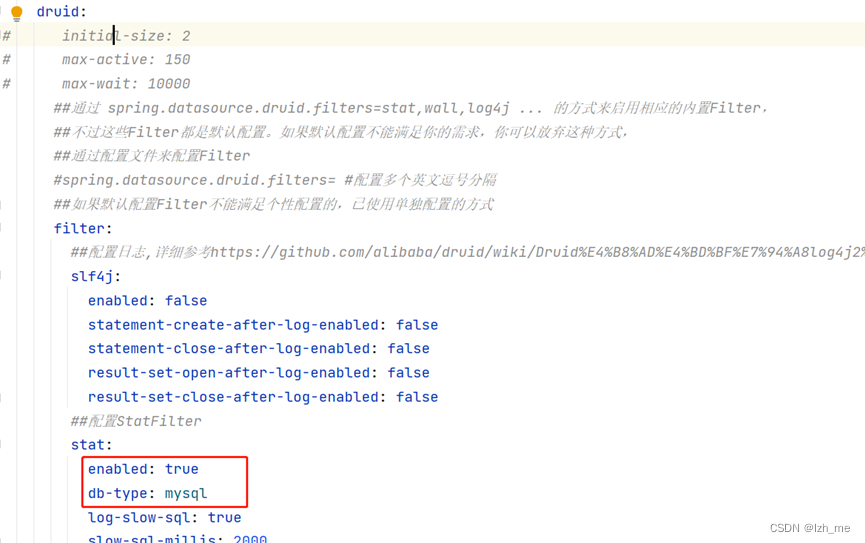
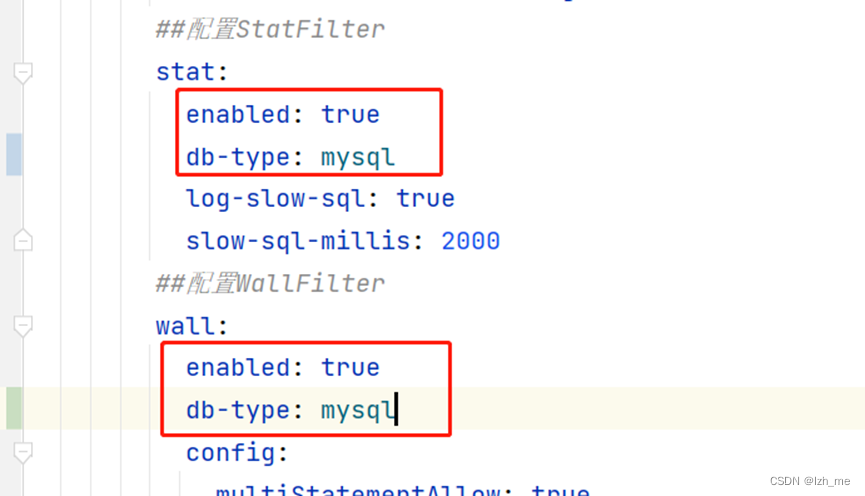
总结: 除了dbType not support这个问题外,我这还遇到了connection error的问题,最后发现其实和P6Spy无关。我这不是纯净的框架,数据源配置都是jar包的方式继承的父项目,改起来很费劲。P6Spy配置其实很简单,Durid连接池用MySQL的时候会有dbType不识别问题,其余的数据源都很好集成,如果遇到其余的稀奇古怪的问题,请先排查框架本身是否正常。
